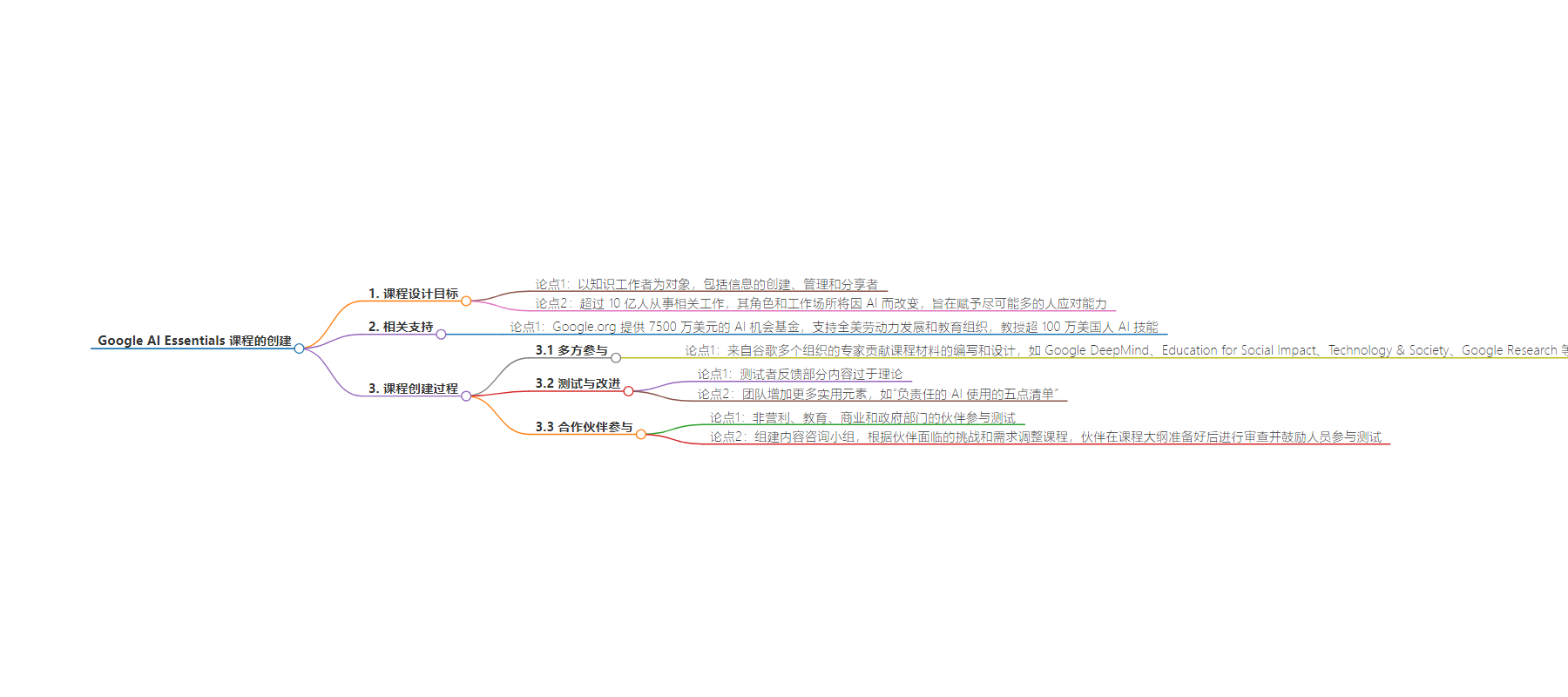包阅导读总结
1. 关键词:Google AI Essentials、知识工作者、课程设计、跨功能努力、反馈改进
2. 总结:Google 为知识工作者设计了 AI Essentials 课程,投入 7500 万美元的基金支持。课程开发是跨功能努力,经测试和反馈后增加实用元素。非营利等多领域伙伴参与测试,课程旨在助力应对 AI 带来的工作变化。
3. 主要内容:
– Google 设计了 AI Essentials 课程,目标受众是知识工作者
– 此类人群数量庞大,工作受 AI 影响,课程旨在帮助他们适应变化
– 课程开发是跨功能的
– 谷歌多个组织的专家参与编写和设计课程材料
– 进行了测试和反馈
– 测试者提出部分内容太理论,团队增加实用元素,如创建“负责任使用 AI 清单”
– 多个领域伙伴参与
– 成立内容咨询小组,伙伴提供面临的挑战和需求,课程准备好后伙伴鼓励人员参与测试
思维导图:
文章地址:https://blog.google/outreach-initiatives/grow-with-google/google-ai-essentials-course-creation/
文章来源:blog.google
作者:Joel Meares
发布时间:2024/6/25 13:57
语言:英文
总字数:900字
预计阅读时间:4分钟
评分:88分
标签:人工智能,谷歌,教育,AI Essentials
以下为原文内容
本内容来源于用户推荐转载,旨在分享知识与观点,如有侵权请联系删除 联系邮箱 media@ilingban.com
“We designed AI Essentials with knowledge workers in mind — people who are creating, managing and sharing information,” Anoop says. “That’s a very large part of the economy, over 1 billion people globally. Many of those workers rely on our tools, from Search to Docs. With AI, roles are going to evolve, as is the workplace, and we want to empower as wide a group as possible to work with these shifts — and to thrive.”
To that end, we announced the course in tandem with a $75 million AI Opportunity Fund from Google.org, which will support workforce development and educational organizations across the U.S. as they teach more than 1 million Americans AI skills.
AI Essentials’ journey from proposal to reality was a cross-functional effort. Subject matter experts from multiple organizations within Google contributed to writing and designing course materials, from Google DeepMind, Education for Social Impact, Technology & Society, Google Research and beyond.
When it was time to beta test, testers took all five modules and provided feedback, like identifying sections that felt too theoretical.
In response to that feedback, the team decided to add more practical elements to the course, says Grow with Google Program Manager Yasmin Sanders Fathi, who led the development of AI Essentials. They created, for example, a five-point “Checklist for Responsible AI Use.” It includes action items like evaluating content before sharing it. “We thought this was a useful and hands-on approach to teaching a pretty theoretical concept,” Yasmin says.
Partners in the nonprofit, educational, commercial and government sectors also tested the course. “During the development stage, we put together a Content Advisory Group of top partners, and I had calls with them to ask about the challenges they are facing and how they want to incorporate AI in the workplace,” Yasmin says. “Then, when the syllabus was ready, they reviewed it and encouraged their workers and faculty members to beta test.”
